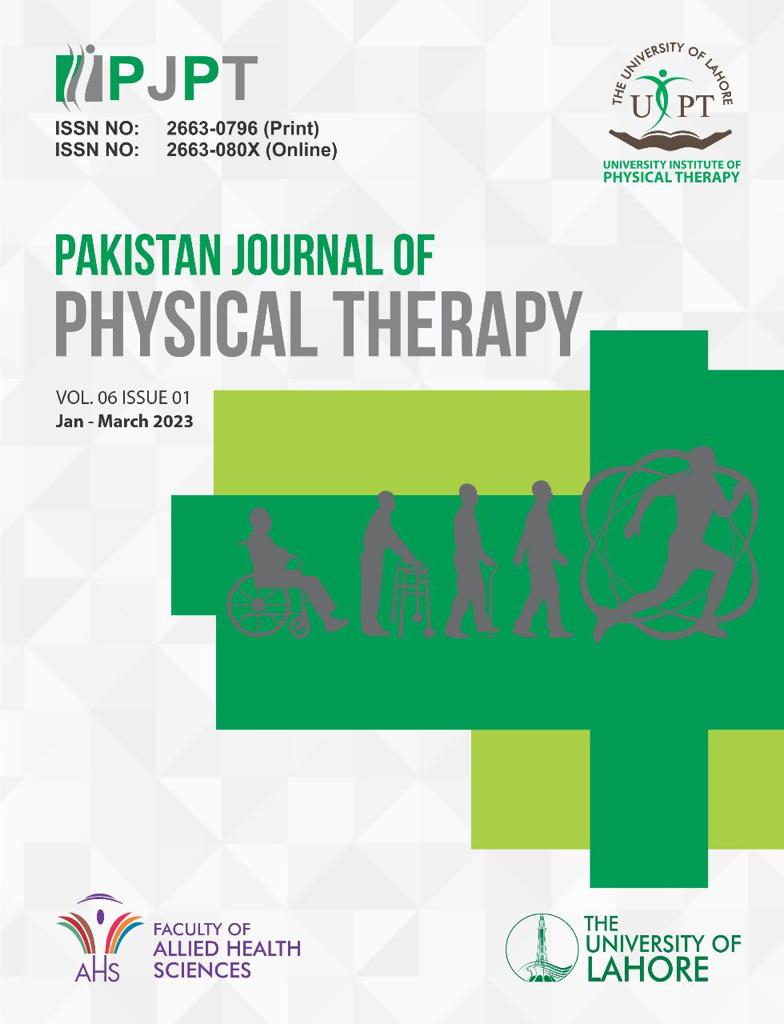PREVALENCE PREVALENCE OF TURNING DIFFICULTY IN STROKE SURVIVORS
DOI:
https://doi.org/10.52229/pjpt.v6i1.2016Keywords:
Hemiplegic stroke, trunk control, turning difficulty, BalanceAbstract
Background: A succession of foot motions that guide the body in a new direction is known as turning. As a result, regaining motor function in the paretic foot and leg is critical for turning. While turning, the functions of the internal and external legs differ, with the exterior leg creating propulsion and swinging to move the body in the desired direction and the internal leg stabilizing posture. Objective: To discover the prevalence of hemiplegic stroke survivors who experience turning difficulty in patients regarding the number of steps, turn duration and balance. Material and Methods: After the research ethics committee approved the proposal, an analytical cross-sectional study was conducted in Services Hospital, Lahore within six months after approval of the synopsis. The study comprises 196 participants of both genders according to the inclusion and exclusion criteria of the study and a convenient sampling strategy was used to enroll participants in the study. The study's goal and methodology were fully explained to the participants. Verbal consent was taken from the participants and the questionnaire of the study was given to the participants through the predesigned questionnaire that include demographic data, the trunk impairment scale and the Berg balance scale. The participants were guided to answer every question correctly to prevent any biases or errors in the results of the study. After completion of the questionnaire, every questionnaire was collected and data was entered in the SPSS sheet for data analysis. Frequency and percentages were calculated for qualitative data. Conclusion: The study showed that in comparison to healthy people, half of the stroke patients used an inefficient step strategy, they took at least five steps and more than three seconds for each turn and showed increased instability. Their ability to turn was very weakly correlated with balance, trunk control and the level of motor recovery in their paretic lower limbs. Performance did not correspond with worry about falling when engaging in normal tasks.
Keywords: balance, hemiplegic stroke, trunk control, turning difficulty



